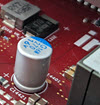
I am coming back to my project of testing AI models, local and in the cloud, on a few coding problems that seem surprisingly difficult. The models I used in my previous posts (analyze code, write code, reason about code) were mostly from the US or China, even though I did try the French Mistral-7B model. In this post, I test the full-power cloud-based Mistral Le Chat, as well as the midsize local Codestral model. Time to try the European AI!
Continue reading “Testing Mistral Le Chat (Coding and Understanding Code)”



